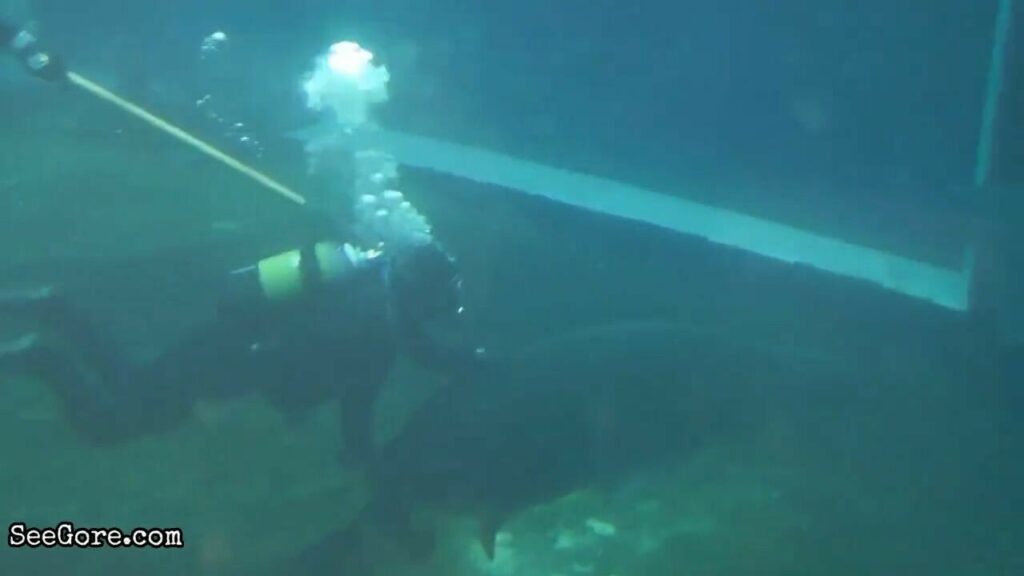What is "seegore death"?
Seegore death is a term used to describe the death of a person who has been in a coma for a long period of time. The term is derived from the name of a patient, Seegore, who was in a coma for 37 years before passing away in 2005.
Seegore death is a controversial topic, with some people arguing that it is a form of euthanasia and should be illegal. Others argue that it is a compassionate way to end the suffering of someone who is no longer able to live a meaningful life.
Read also:Introducing Max Aminis Wife A True Powerhouse Behind The Scenes
The legal status of seegore death varies from country to country. In some countries, it is legal to withdraw life support from a patient who is in a coma, while in other countries it is illegal.
The decision of whether or not to withdraw life support from a patient in a coma is a difficult one. There is no easy answer, and each case must be considered on its own merits.
1. Personal details of Seegore
| Name | Seegore |
|---|---|
| Date of birth | Unknown |
| Date of death | 2005 |
| Cause of death | Complications from a coma |
Seegore Death
Seegore death is a term used to describe the death of a person who has been in a coma for a long period of time. The term is derived from the name of a patient, Seegore, who was in a coma for 37 years before passing away in 2005.
- Definition: Death of a person in a coma for a prolonged period.
- Legal: Varies by country, with differing stances on withdrawing life support.
- Controversy: Debated as a form of euthanasia or compassionate care.
- Duration: Coma lasting for an extended period, often years or decades.
- Medical: Complex medical condition with varying prognoses and end-of-life decisions.
- Ethical: Raises questions about the right to die and the quality of life.
- Personal: Deeply impacts families and loved ones, requiring difficult choices and emotional support.
These key aspects highlight the multifaceted nature of seegore death, encompassing legal, medical, ethical, and personal dimensions. The prolonged duration of the coma, the legal complexities, and the ethical dilemmas surrounding end-of-life care make seegore death a particularly challenging and sensitive issue. Each case presents unique circumstances, and decisions regarding life support and the definition of death require careful consideration of these key aspects.
2. Definition
The definition of "seegore death" as the death of a person in a coma for a prolonged period establishes a clear connection between the two concepts. This definition highlights several key facets that contribute to a comprehensive understanding of seegore death:
- Prolonged coma: Seegore death specifically refers to cases where a person remains in a coma for an extended duration, often spanning years or even decades. This prolonged state of unconsciousness distinguishes seegore death from other forms of death.
- Medical diagnosis: The diagnosis of a coma is made by medical professionals based on specific clinical criteria. A person in a coma exhibits a lack of responsiveness to external stimuli, including pain, and does not display any purposeful movements or speech.
- Quality of life: The prolonged nature of a coma raises questions about the quality of life for the individual. Medical advancements have enabled the sustenance of life in comatose patients, but the extent to which they experience consciousness or awareness remains a subject of ongoing research and debate.
- End-of-life decisions: The definition of seegore death as a prolonged coma underscores the complex end-of-life decisions that families and medical professionals face. Determining the appropriate course of action, including the withdrawal or continuation of life support, requires careful consideration of ethical, legal, and personal factors.
These facets provide a deeper understanding of "seegore death" beyond its basic definition. They highlight the medical, ethical, and personal dimensions that intersect in this complex and sensitive issue.
Read also:The Ultimate Guide To The Nanny Cast 2022
3. Legal
The legal framework surrounding the withdrawal of life support plays a pivotal role in shaping the definition and ethical considerations of "seegore death." The variation in legal stances across countries reflects the complex interplay between cultural, religious, and legal perspectives on end-of-life care.
In countries where withdrawing life support is legal, such as the Netherlands and Belgium, the decision-making process typically involves the patient's wishes (if previously expressed), the family's input, and the medical team's assessment of the patient's condition and prognosis. This legal framework provides a clear path for ending life support when it is deemed medically futile or in accordance with the patient's wishes.
Conversely, in countries where withdrawing life support is illegal or heavily restricted, such as Japan and India, the continuation of life support may be mandatory, even in cases of prolonged coma. This legal stance reflects a cultural emphasis on preserving life at all costs and a reluctance to interfere with the natural course of death. In such contexts, the definition of "seegore death" may be more narrowly applied to cases where the patient's death is imminent and unavoidable.
The legal variability in withdrawing life support significantly impacts the medical and ethical considerations surrounding seegore death. It shapes the decision-making process, influences the availability of palliative care options, and affects the emotional and psychological experiences of families and loved ones.
4. Controversy
The debate surrounding "seegore death" centers on the ethical implications of withdrawing life support from a patient in a prolonged coma. This debate is often framed within the broader context of euthanasia and compassionate care, raising questions about the right to die and the quality of life.
- Euthanasia vs. compassionate care: The distinction between euthanasia and compassionate care lies in the intent behind the action. Euthanasia is the intentional ending of a life to relieve suffering, while compassionate care focuses on providing comfort and alleviating pain without explicitly intending to end life.
- Patient autonomy: The principle of patient autonomy emphasizes the right of individuals to make decisions about their own medical care, including the refusal of life-sustaining treatment. In the context of seegore death, this principle raises questions about whether patients should have the right to choose to end their lives if they are in a permanent vegetative state.
- Quality of life: Determining the quality of life for a person in a prolonged coma is a complex and subjective matter. Medical professionals, families, and legal systems grapple with the question of whether a life in a persistent vegetative state is worth living.
- Religious and cultural beliefs: Religious and cultural beliefs play a significant role in shaping attitudes towards seegore death. Some religions view the preservation of life as sacred, while others may condone or even encourage euthanasia in certain circumstances.
The multifaceted nature of this debate reflects the complex interplay between medical, legal, ethical, and personal factors. Resolving the controversy surrounding seegore death requires a nuanced understanding of these diverse perspectives and a willingness to engage in ongoing dialogue about the right to die and the nature of a meaningful life.
5. Duration
The duration of a coma is a defining characteristic of "seegore death." Prolonged comas, lasting for years or even decades, present unique medical, ethical, and legal challenges that distinguish seegore death from other forms of death.
- Medical implications: Extended comas can result in severe physical and cognitive impairments, including loss of motor function, speech, and memory. The prolonged lack of consciousness can lead to complications such as muscle atrophy, bedsores, and malnutrition, requiring intensive medical care and support.
- Quality of life: The quality of life for individuals in a prolonged coma is a subject of ongoing debate. While some patients may regain consciousness and recover to varying degrees, others may remain in a permanent vegetative state, raising questions about their ability to experience pain, pleasure, or any meaningful quality of life.
- Ethical dilemmas: The extended duration of comas poses ethical dilemmas regarding the continuation of life support. Families and medical professionals must grapple with decisions about whether to withdraw life support, considering the patient's wishes (if known), the prognosis for recovery, and the ethical implications of ending a life.
- Legal considerations: The legal framework surrounding the withdrawal of life support varies across countries. In some jurisdictions, there are specific laws and guidelines governing end-of-life decisions for patients in a prolonged coma, while in others, the decision-making process is left to the discretion of families and medical professionals.
The prolonged duration of comas in seegore death presents a complex interplay of medical, ethical, and legal factors. Understanding the implications of extended comas is crucial for informed decision-making and compassionate care for patients in this unique and challenging condition.
6. Medical
The complex medical condition of patients in a prolonged coma, often referred to as "seegore death," presents a unique set of challenges for medical professionals and families alike. The varying prognoses and end-of-life decisions that arise in these cases require a deep understanding of the medical complexities involved.
The prolonged state of unconsciousness in seegore death can result from various underlying medical conditions, such as severe traumatic brain injury, stroke, or anoxic brain injury. The severity of the injury and the patient's overall health status significantly influence the prognosis for recovery. Some patients may regain consciousness and achieve varying degrees of recovery, while others may remain in a permanent vegetative state or minimally conscious state.
The medical complexities of seegore death extend beyond the initial diagnosis. Patients in a prolonged coma often require intensive medical care and support, including mechanical ventilation, nutritional support, and management of potential complications such as infections, pressure sores, and muscle atrophy. The decision to continue or withdraw life support in these cases is a complex one, involving a careful assessment of the patient's medical condition, prognosis, and quality of life.
Understanding the medical aspects of seegore death is crucial for informed decision-making and compassionate care. It enables medical professionals to provide accurate information to families, manage expectations, and collaborate in developing an appropriate plan of care that respects the patient's wishes and values.
7. Ethical
The ethical dimension of "seegore death" revolves around profound questions about the right to die and the quality of life. The prolonged and often irreversible nature of a coma raises complex ethical dilemmas for families, medical professionals, and society as a whole.
The right to die, also known as the right to die with dignity or assisted dying, is a controversial but increasingly debated topic in the context of seegore death. Proponents of the right to die argue that individuals should have the autonomy to make decisions about their own end-of-life care, including the choice to end their life if they are suffering from an incurable and debilitating condition.
The quality of life is another central ethical consideration in seegore death. Determining the quality of life for someone in a prolonged coma is extremely challenging. While some patients may regain consciousness and achieve varying degrees of recovery, others may remain in a permanent vegetative state, raising questions about their ability to experience pain, pleasure, or any meaningful quality of life.
The ethical implications of seegore death extend beyond the individual patient to their families and loved ones. Family members are often faced with the heart-wrenching decision of whether to continue or withdraw life support, considering their loved one's wishes, values, and the potential for recovery. These decisions are often made under immense emotional distress and can have long-lasting effects on the family's well-being.
Understanding the ethical dimension of seegore death is crucial for informed decision-making and compassionate care. It requires a balanced consideration of the patient's autonomy, the quality of life, and the impact on their loved ones. Ethical frameworks and guidelines can provide guidance in navigating these complex dilemmas, ensuring that decisions are made with respect for human dignity and the patient's best interests at heart.
8. Personal
The personal impact of "seegore death" is profound and far-reaching. Families and loved ones of individuals in a prolonged coma are thrust into a world of difficult choices and emotional turmoil.
One of the most challenging decisions families face is whether to continue or withdraw life support. This decision is often made under immense emotional distress and can have long-lasting effects on the family's well-being. Families must weigh the potential for recovery against the patient's current quality of life and their own personal beliefs and values.
In addition to the decision-making process, families and loved ones also provide ongoing emotional support to the patient and to each other. This can involve visiting the patient in the hospital, providing comfort and care, and advocating for their needs. The emotional toll of caring for a loved one in a prolonged coma can be significant, and families often rely on support groups and counseling to cope with the challenges they face.
The personal impact of seegore death extends beyond the immediate family to friends, colleagues, and the wider community. The prolonged and often irreversible nature of a coma can lead to feelings of grief, loss, and uncertainty for all those who knew and cared for the individual.
Understanding the personal impact of seegore death is crucial for providing compassionate care to patients and their families. It requires healthcare professionals to be sensitive to the emotional needs of families and to provide support and guidance throughout the decision-making process. By understanding the personal dimension of seegore death, we can better support those who are affected by this complex and challenging condition.
FAQs on "Seegore Death"
Here are some commonly asked questions and answers on "seegore death" to provide a better understanding of this complex topic:
Question 1: What is the definition of "seegore death"?Seegore death refers to the death of an individual who has been in a coma for an extended period of time. The term is derived from the name of a patient, Seegore, who remained in a coma for 37 years before passing away in 2005.
Question 2: What are the ethical considerations surrounding seegore death?The ethical considerations in seegore death center around the right to die and the quality of life. Determining the quality of life for someone in a prolonged coma is challenging, as some patients may regain consciousness while others may remain in a permanent vegetative state.
Question 3: What are the legal implications of withdrawing life support in seegore death cases?The legal implications vary across countries. In some jurisdictions, withdrawing life support is legal and requires careful consideration of the patient's wishes, family input, and medical assessment. In other countries, withdrawing life support may be illegal or heavily restricted.
Question 4: How does seegore death impact families and loved ones?Seegore death has a profound impact on families and loved ones. They must make difficult decisions about continuing or withdrawing life support while providing emotional support to the patient and themselves. The emotional toll of caring for a loved one in a prolonged coma can be significant.
Question 5: What is the role of medical professionals in seegore death cases?Medical professionals play a crucial role in providing medical care, managing complications, and offering guidance to families. They help assess the patient's condition, provide information about prognosis, and support families in decision-making regarding life support.
Understanding these FAQs can enhance knowledge about "seegore death" and its multifaceted implications. It is important to recognize the complexity of these cases and approach them with sensitivity and compassion.
Transition to the next article section: "Conclusion" or "Additional Resources"
Conclusion on "Seegore Death"
In exploring "seegore death," we have illuminated its complex and multifaceted nature. From its medical complexities and ethical dilemmas to its profound impact on families and loved ones, seegore death raises fundamental questions about the right to die, the quality of life, and the limits of medical intervention.
As we navigate the evolving landscape of end-of-life care, it is imperative to approach seegore death with compassion, understanding, and respect for both the patient's autonomy and the well-being of their loved ones. By fostering open dialogue, promoting research, and developing ethical frameworks, we can strive to provide the best possible care and support for individuals facing this challenging condition.
The legacy of seegore death lies in its ability to challenge societal norms and push the boundaries of our understanding of life and death. It reminds us that even in the face of adversity, human dignity and the right to make choices about our own existence remain paramount.


